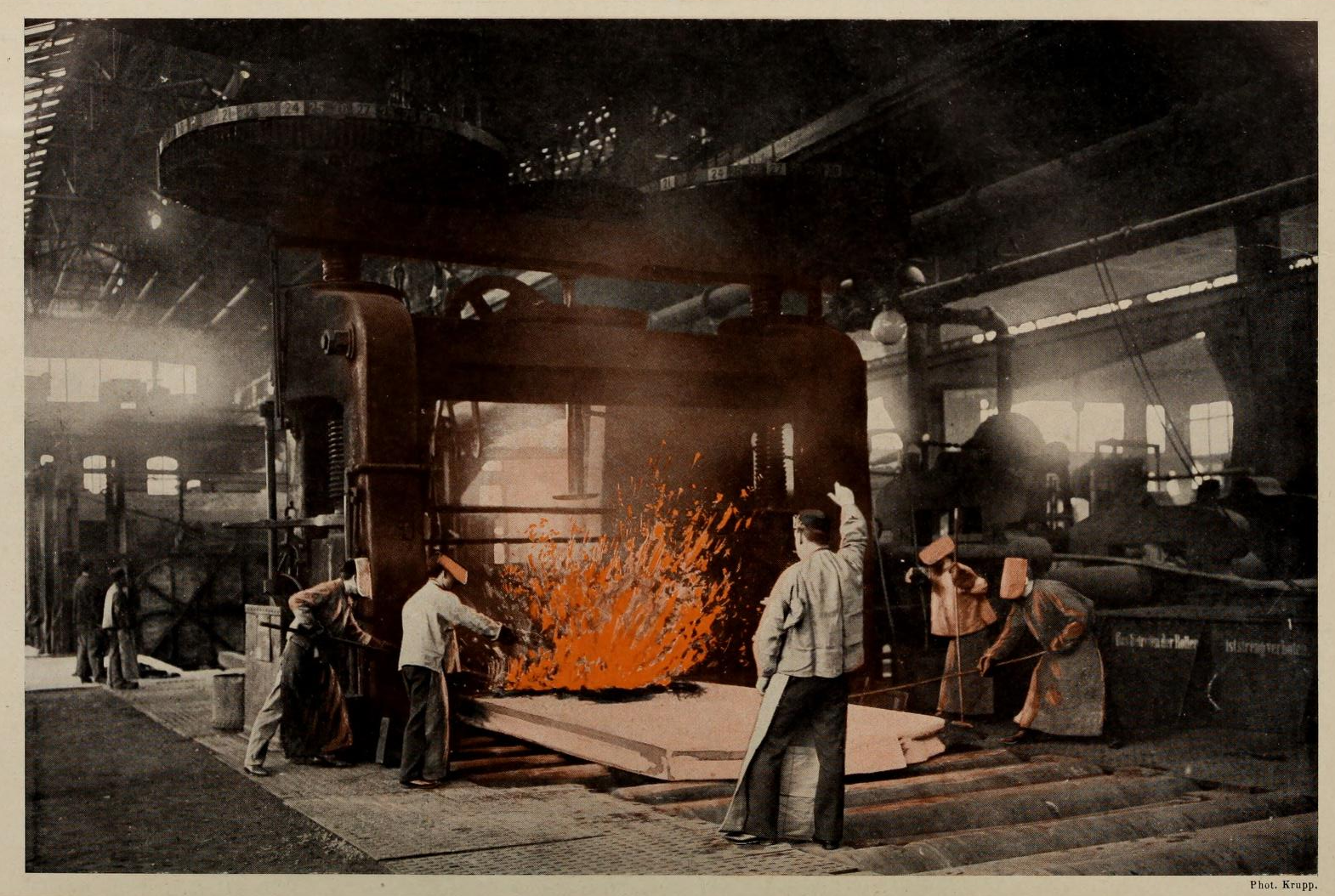Germany in 1912: Images 331 to 340
Monday, April 27, 2015
 |
| Krupp. -- An armored double turret in a state of completion. At the top, slightly above the roof of the turret, is the armored cupola where those who fire it are posted. |
 |
| Krupp. -- A 15 cm side cannon, 7.5 metres in length. It is mounted on an eclipse lookout. On the left we see test projectiles. |
 |
| Left: effect of a 255 mm breaking shell, charged with 31 kg of picric acid. Centre: Nickel-steel cap serving as an object of study. Right: Hardened nickel-steel plate used for the experiments. |
 |
| Krupp. -- A 28 cm edge cannon. This gun, intended to be placed in a turret, is provisionally installed in a battery for development and adjustment. It is 11.2 metres in length. |
 |
| Dreadnought. -- The Nassau class belongs to one of two squadrons of dreadnoughts: the first Nassau dates to 1908, and in just five years Germany will possess sixteen dreadnoughts. |
 |
| Left: Prince Henry of Prussia, Grand Admiral and Inspector General of the Navy. Right: Prince Adalbert of Prussia, third son of Wilhelm II, an officer in the Navy. |
 |
| Left: Admiral von Köstler, acting president of the Navy League: the Flottenverein. Right: Admiral von Tirpitz since 1897 has been the Minister of the Navy, and high admiral of the navy since 1911. |
 |
| Dreadnoughts. -- The Kaiser is the most modern type of the division. These are ships of 24,500 tons, moving at 23 knots 6, and protected by hardened Krupp steel armour. |
 |
| Dreadnoughts. -- The Friedrich der Grosse of the Kaiser class is also in the squadron. The armament of this ship consists of ten 305 mm cannons, fourteen of 150 mm, and twelve of 88 mm. |







0 comments:
Post a Comment